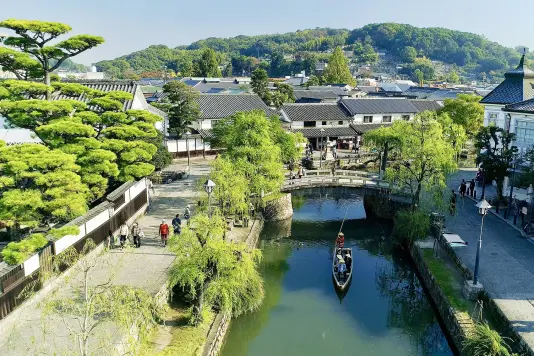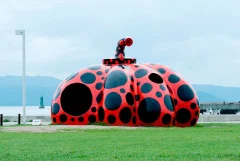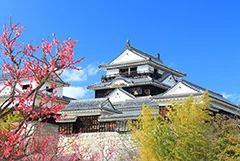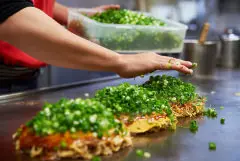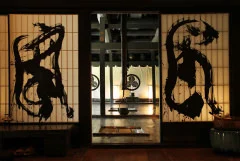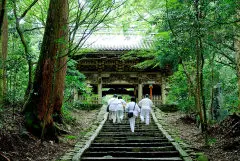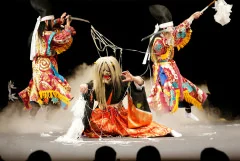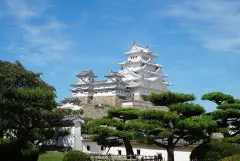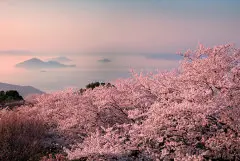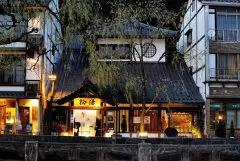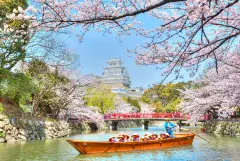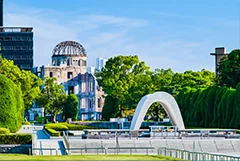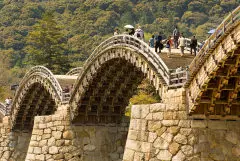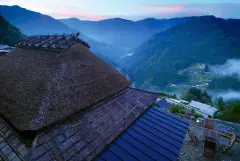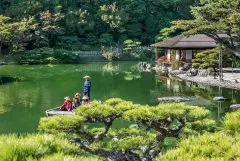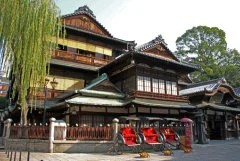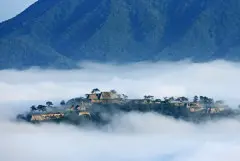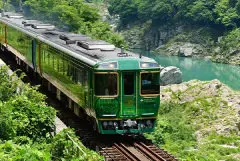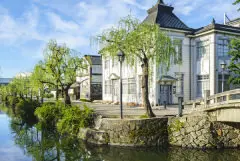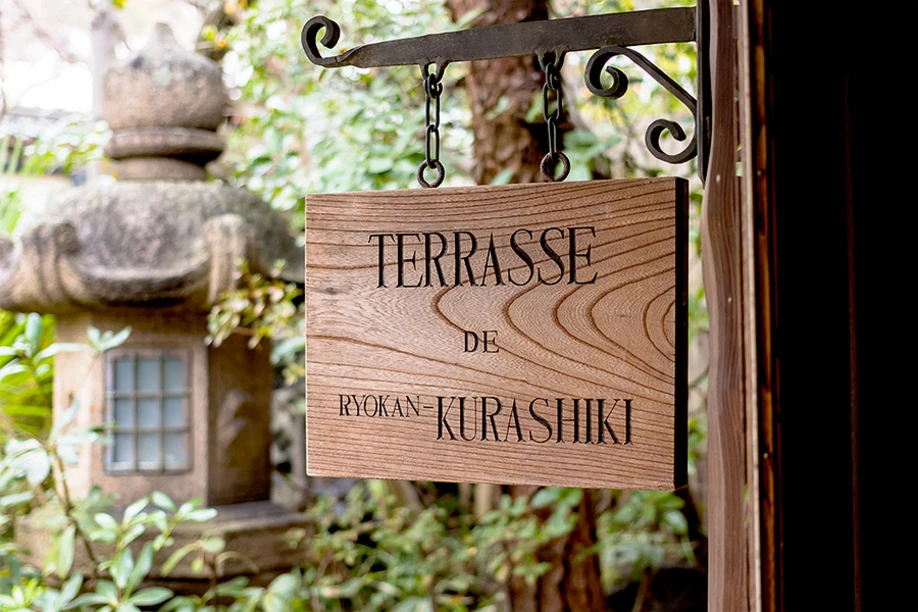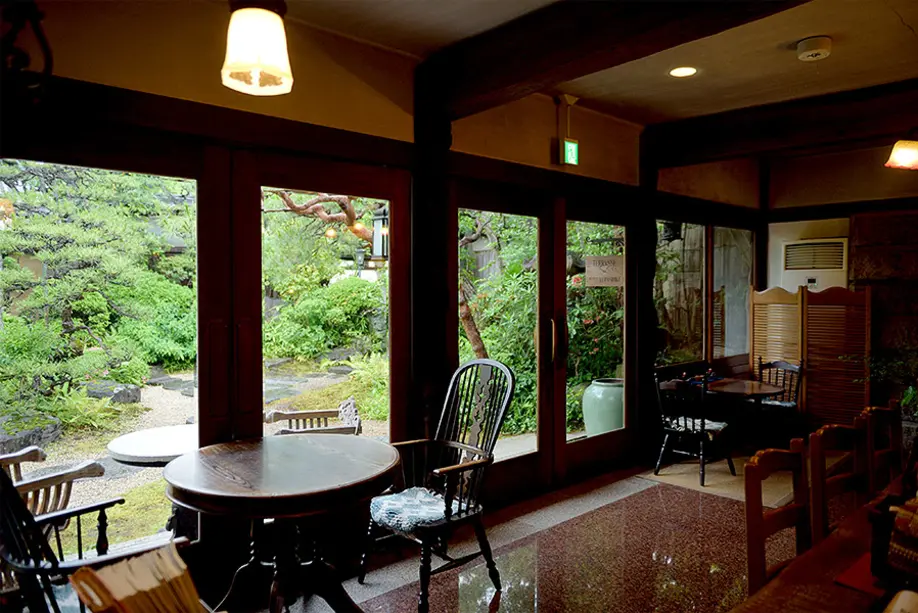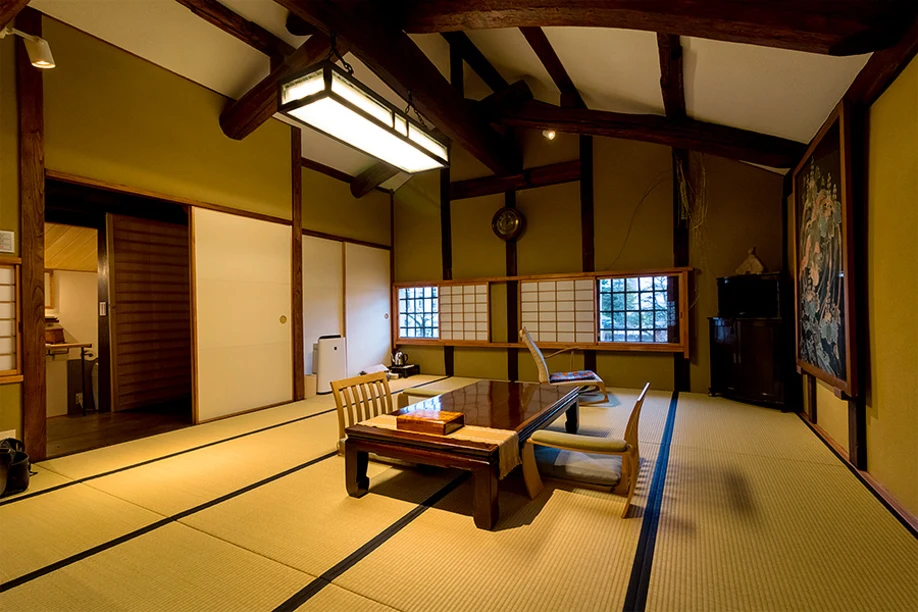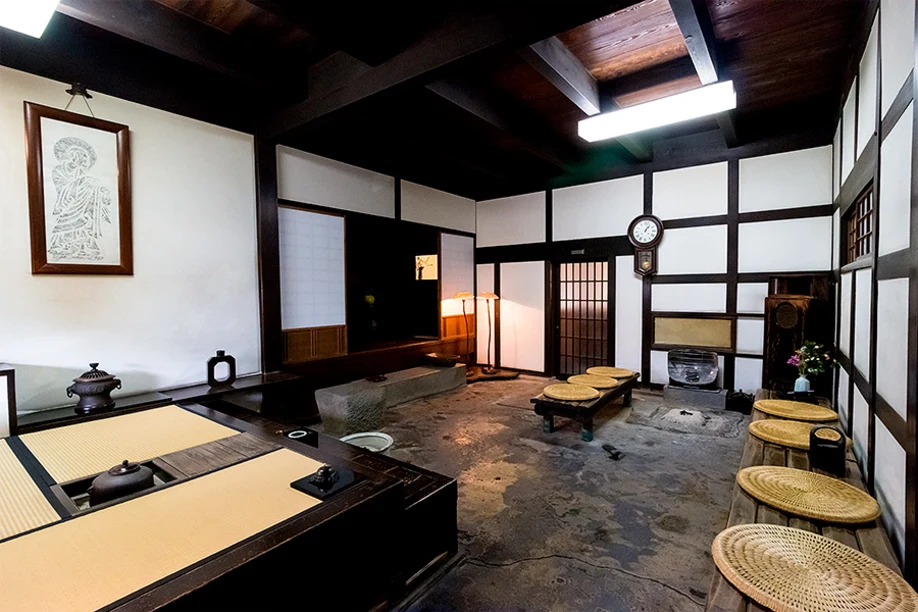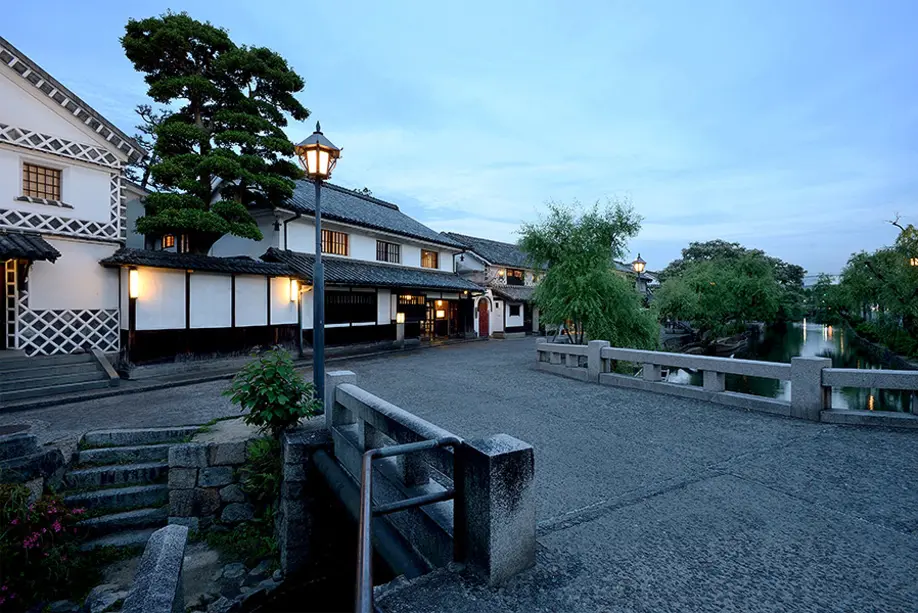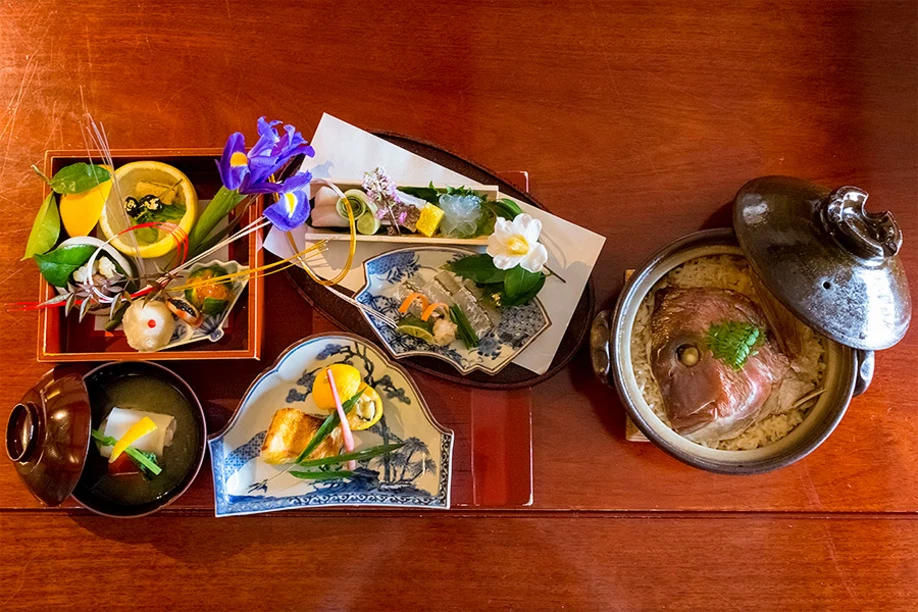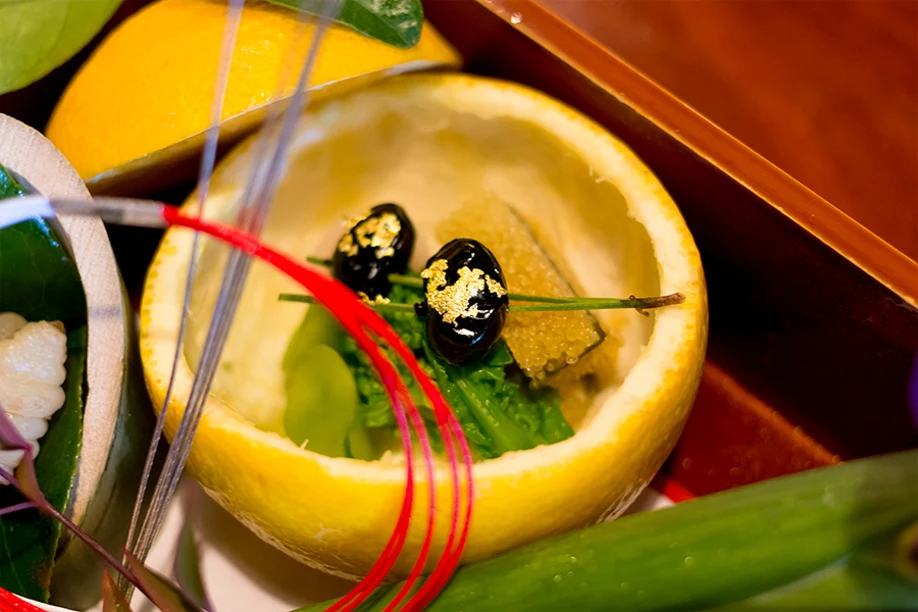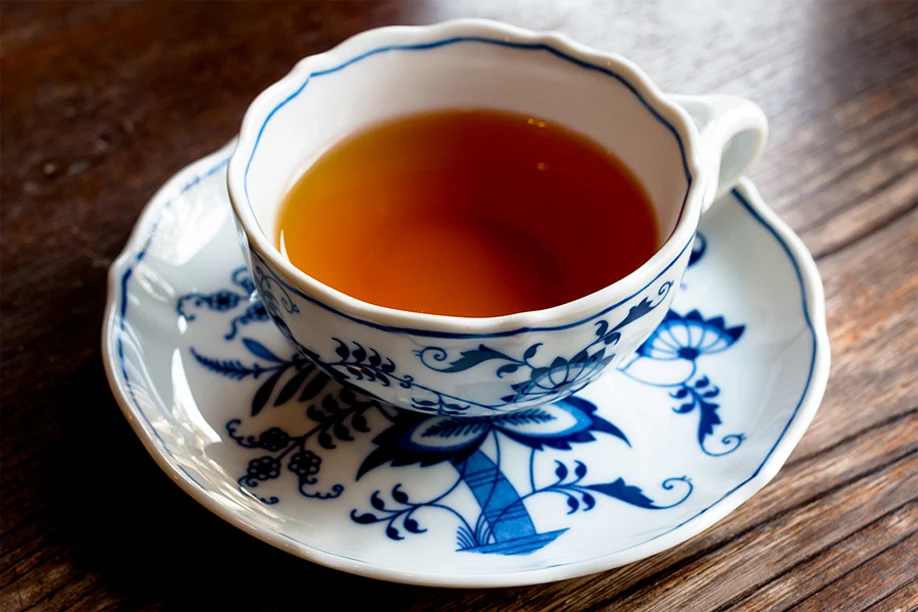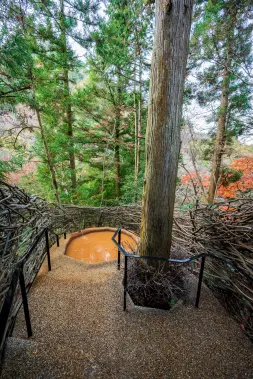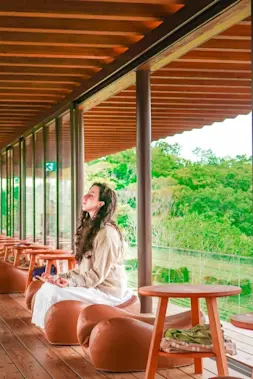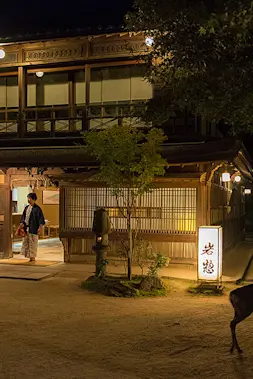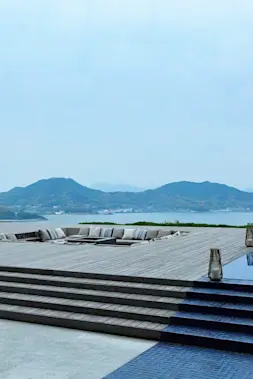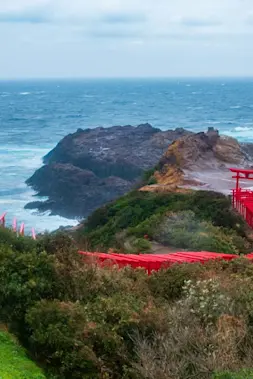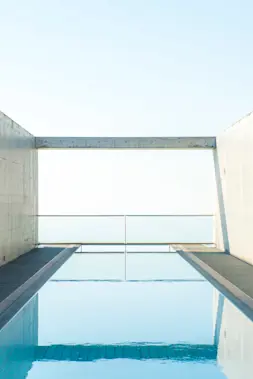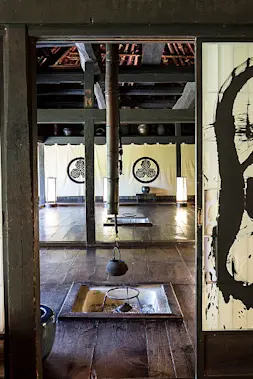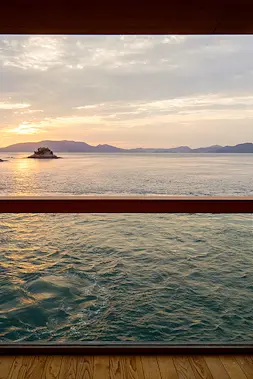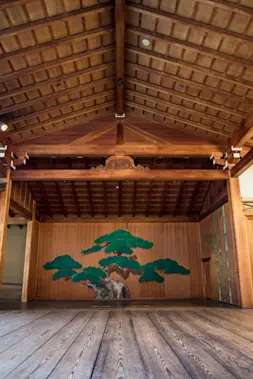Relaxing Stay
Ryokan Kurashiki - Modern Comfort, Vintage Style
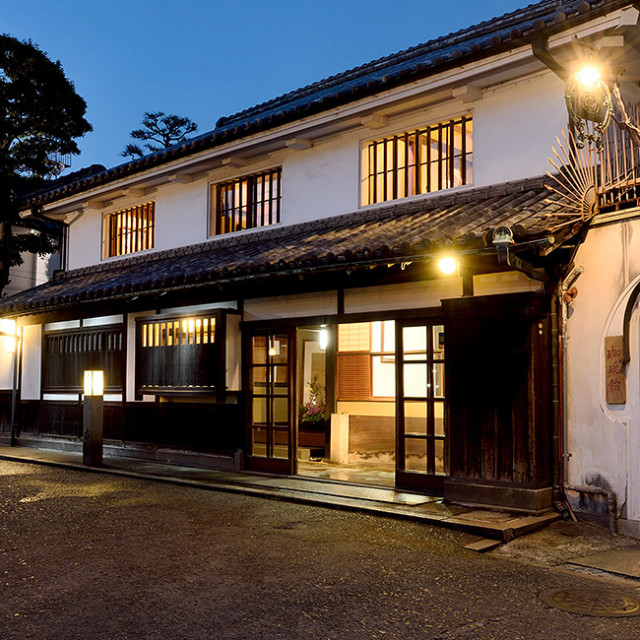
-
- DESTINATION NAME
- Okayama
-
- RELATED TAGS
-
- LAST UPDATED
- 16 October, 2019
Sipping tea at an antique table in the vintage lounge room of Ryokan Kurashiki, it’s hard for me to imagine a place more ideally situated.
Aside from easy day-trip distances to Hiroshima, Miyajima, Naoshima, Himeji Castle, Kobe, and much more, Kurashiki itself could effortlessly furnish an entire vacation’s worth of exploration for those who prefer going deep instead of wide.
To put things in perspective, from the front door of Ryokan Kurashiki, you can walk about three minutes and find yourself standing on the threshold of a traditional restaurant, in the private workshop of a local artisan, or in front of a painting by Monet.
Boasting a rich history dating back to the Edo Period (1602 – 1867), Kurashiki (literally meaning “warehouse village”) served as a hub for the storage and transport of goods from Western Honshu to the capital. At that time, Kurashiki operated as a Tenryou, meaning a merchant quarter under direct control of the shogunate, a period which saw the construction of many of the warehouses still standing along the picturesque canal in Bikan District, Kurashiki’s historically preserved area.
Today those warehouses, painstakingly preserved, contain museums, restaurants, shops, and — as in the case of Ryokan Kurashiki — a traditional Japanese inn of a caliber sufficient to receive such guests as Sophia Loren, Yo-Yo Ma, among others.
“We’ve been a luxury establishment from the beginning,” says Ritsuko Nakamura, manager at Ryokan Kurashiki, as she sits across the table from me in the lounge.
Founded in 1957, when Japan’s economy first began recovering from the devastation of WWII, Ryokan Kurashiki opened in the former warehouses of a sugar merchant, the oldest of which buildings dates back over 310 years. In fact, the stone steps leading down to the canal in front of Ryokan Kurashiki once served as the facility’s private loading dock.
“By the mid 50s, the warehouse owner was looking to sell the property,” says Nakamura, “and it was actually local members of the community, including Mr. Ohara — best known for the Ohara Museum of Art down the street,” (i.e. the place with the Monet), “who convinced him to sell it to a local instead of, say, a Tokyo-based trading company. If local residents hadn’t worked to keep these warehouses in the community, Bikan District would be a very different place today.”
Yet luckily, due to Mr. Ohara’s efforts, the warehouses passed to Mrs. Hatakeyama, a local woman running a riverside oyster restaurant. Though faced with reluctance at first, Mr. Ohara eventually talked her into the idea of starting an upscale inn, at which point she took a chance and bought the old sugar warehouses.
Ryokan Kurashiki opened shortly thereafter with 20 rooms as the first luxury ryokan in the area, and has only grown since.
Yet amazingly, “growing” for Ryokan Kurashiki has meant offering less rooms, not more.
“Back when we first started, ‘luxury’ meant a different thing,” explains Nakamura. “At that time, simply having a private room was a big deal, and quite expensive. Shared bathing and restroom facilities were the norm, so it didn’t bother anyone.”
Ryokan Kurashiki now offers eight unique rooms, each a perfect combination of classic Japanese charm and modern amenities. Gone are the shared facilities, replaced by private and beautifully outfitted bathrooms.
But these aren’t the only changes Ryokan Kurashiki has seen in recent years. Most of their rooms also come equipped with western style beds, set low to more closely emulate the classic Japanese “futon on the floor” experience, only minus the potential backache.
Additionally, you can enjoy the traditional, locally sourced, and utterly gorgeous culinary masterpieces served up from Ryokan Kurashiki’s kitchen either directly in your room as per “old school” ryokan protocol, or while seated at the beautiful, vintage-style restaurant which they’ve recently installed in their main building.
Yet despite these changes, the experience at Ryokan Kurashiki remains every bit a classic one. Aside from offering unparalleled service quality (they magically replaced my Japanese-sized slippers with ones big enough to fit my giant western feet without my having to say a word — they just noticed and fixed it), they’ve also gone through great pains to preserve the romantic atmosphere inherent to an authentic ryokan.
“Of course we need change at some point,” says Nakamura, “but to us it’s an opportunity in disguise. 50 years ago, no one would have stayed in the loft of a sugar warehouse and called it ‘luxury.’ Today we can enjoy the exposed beams, the antique woodwork, and the view from the second floor which our grandparents would have scoffed at.”
And nowadays, with more than 40% of their visitors coming from overseas, some of the other changes at Ryokan Kurashiki include ample material in English, and fluent English speaking staff (including Nakamura herself).
Yet perhaps most delightful of all is the sense of community which pervades the inn. Nakamura and the staff at Ryokan Kurashiki maintain connections throughout the area, and can arrange private visits to the workshops of local artisans practicing traditional crafts such as paper making, fabric dyeing, and more.
It’s the same kind of connection that lead Mr. Ohara to convince Mrs. Hatakeyama to open an inn in the first place.
“Here in Bikan District, we take pride in slow time,” says Nakamura. “People who want a ‘done in five minutes’ kind of experience probably won’t enjoy staying with us. But for those who want to appreciate something old and classic — to learn the story behind it — this is the place for them.”
The clock on the wall, a beautiful antique from the owner’s personal collection, tolls the hour. I take another leisurely sip of tea from the vintage cup before me on the table, and smile at Nakamura. Together we admire the old clock, but at the same time pretend we didn’t hear it.
After all, we still have so much to talk about.
Photographs & Text by Peter Chordas
RELATED DESTINATION
Okayama
The Okayama area has flourished as an area alive with various culture including swords, Bizen ware and other handicrafts. Because of its warm climate, fruits such as peaches and muscat grapes are actively grown there. It is also dotted with places where you can see the islands of the Seto Inland Sea.
